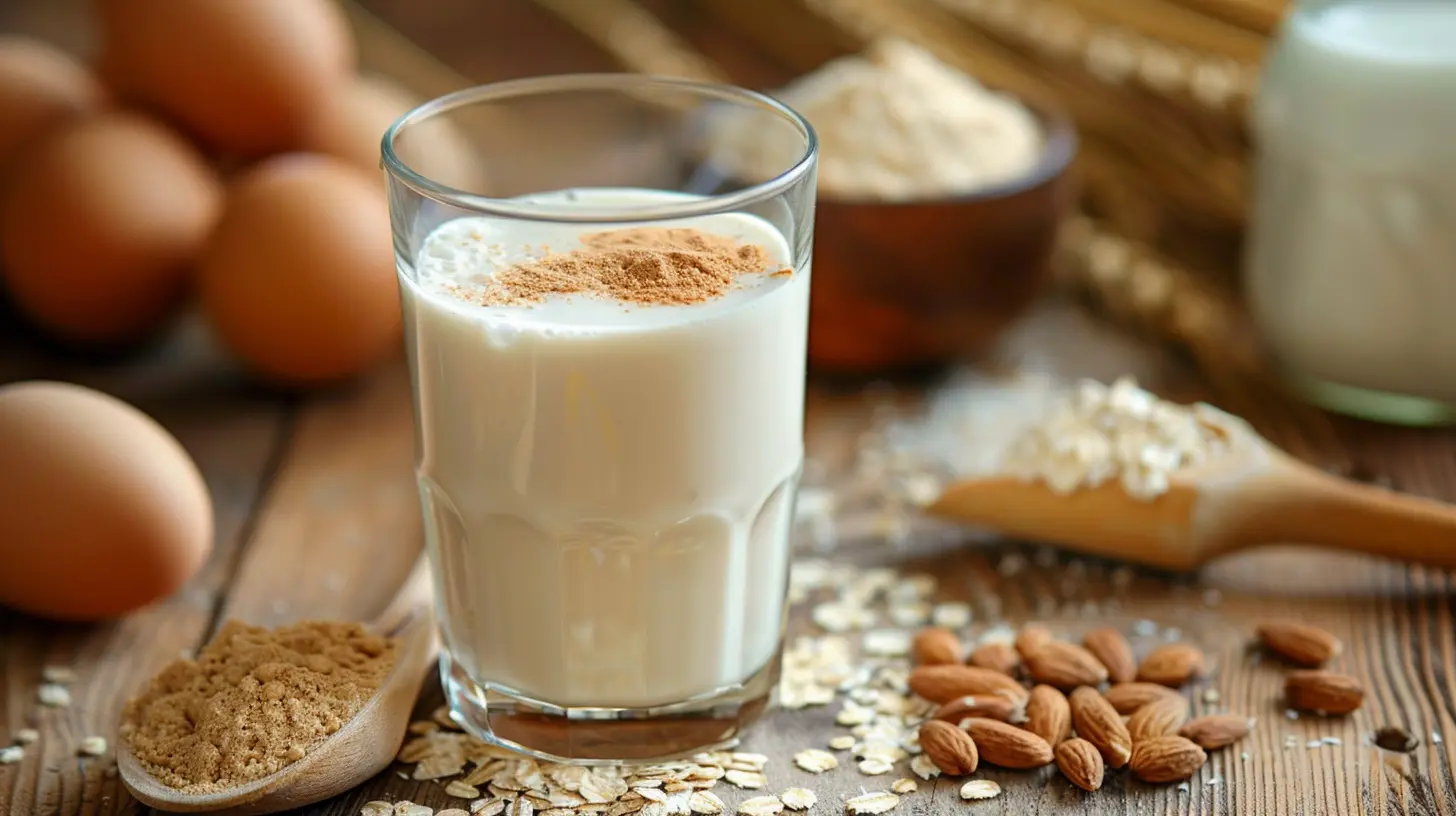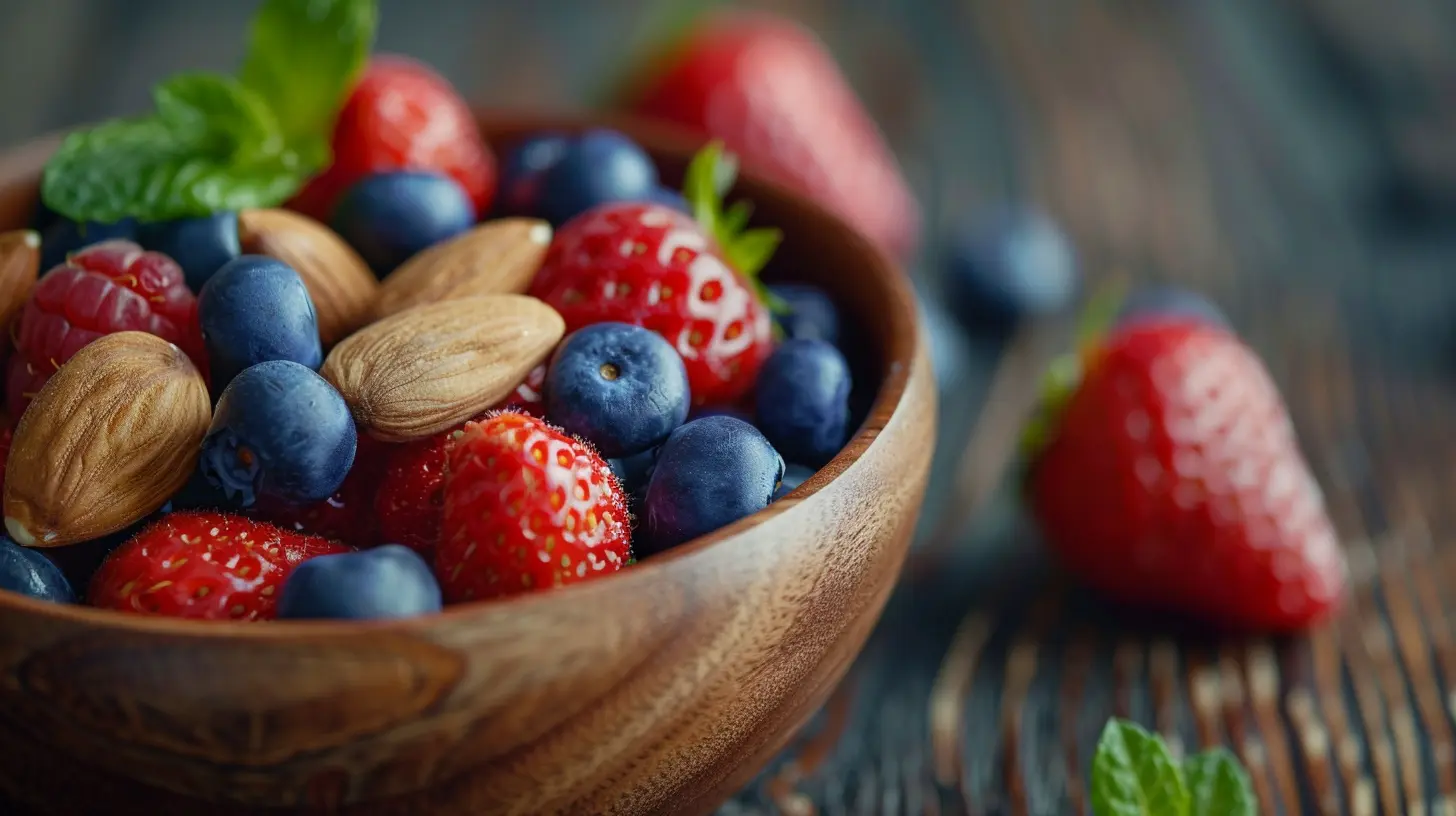Getting the Nutrition You Need While Avoiding Major Allergens
9 June 2025
Let’s be real—figuring out what to eat is hard enough. Add a food allergy or two into the mix, and suddenly choosing something off the menu feels like defusing a bomb. One wrong move, and your day can go from smooth sailing to a full-on emergency.
Whether you’re managing your allergies or doing your best to feed a family that’s navigating food sensitivities, you know the struggle is real. But here’s the good news: you can get all the nutrients your body craves without risking a reaction. It’s not just possible—it’s totally doable with a little knowledge and some smart planning.
So grab a cup of tea (allergen-free, of course), and let’s dig into how you can stay healthy, strong, and totally nourished without putting your body at risk.
What Are Major Allergens Anyway?
Before we dive into solutions, let’s get clear on what we’re up against.The “Big 9” allergens recognized in the U.S. (and similar in many other countries) are:
1. Milk
2. Eggs
3. Peanuts
4. Tree nuts (like almonds, walnuts, cashews)
5. Soy
6. Wheat
7. Fish
8. Shellfish
9. Sesame (newly added in 2021)
These guys are responsible for the majority of food allergies and reactions, ranging from mild to life-threatening. If you—or someone you love—needs to avoid one or more of these, it’s essential to know how to replace what’s missing without missing out on nutrition.
Why Nutrition Can Get Tricky With Allergies
Each of these allergens contributes something to the diet. For example:- Milk = calcium and vitamin D
- Eggs = protein and essential choline
- Peanuts and tree nuts = healthy fats and magnesium
- Wheat = carbs and B vitamins
So ditching them without a backup plan? Not ideal. You might unknowingly shortchange your body on nutrients it really needs. But don’t worry—there are plenty of delicious, nutrient-packed alternatives that won’t trigger your immune system.
Smart Swaps for Common Allergens
Let’s break it down allergen by allergen. Here's how to get the nutrition you need while steering clear of the stuff you can't eat.1. Ditching Dairy but Keeping the Calcium
Milk allergies or lactose intolerance are super common. But cutting out milk doesn’t mean your bones have to suffer.Swap With:
- Fortified plant milks (like almond, oat, rice, or coconut milk—just watch for added sugars and make sure they’re fortified with calcium, vitamin D, and B12)
- Leafy greens (like kale, collards, and bok choy)
- Tofu (made with calcium sulfate—check labels if you’re also avoiding soy)
- Canned fish with bones (like salmon or sardines) if you’re not allergic to fish
Bonus Tip: Vitamin D helps your body absorb calcium, so make sure you’re getting enough sunshine or supplementing if needed.
2. Egg-Free and Still Energized
Eggs are incredibly versatile and nutrient-dense, but if you’re allergic, you’ve gotta find other ways to get your protein, healthy fats, and vitamins.Swap With:
- Chia or flax eggs (great for baking)
- Silken tofu (for scrambles or quiches)
- Legumes like lentils, beans, and chickpeas
- Quinoa (a complete protein)
- Avocados for that creamy texture in recipes
Heads-Up: If you’re using plant-based replacements, check the labels. Many processed substitutes can have sneaky allergens or artificial additives.
3. Peanut and Tree Nut Alternatives
Gone are the days when people laughed at sunflower seed butter. Today, these nut-free options taste great and stack up nutritionally.Swap With:
- Sunflower seed butter
- Pumpkin seed butter
- Tahini (sesame paste—only if you’re not allergic to sesame)
- Roasted chickpeas (for crunchy snacks)
- Hummus for spreads and dips
Nut-Free Protein Tips: Add hemp seeds, chia seeds, and lentils to meals for a rich protein boost.
4. Living Soy-Free and Loving It
Soy is everywhere—from tofu to soy lecithin in baked goods. If you’re avoiding it, you’ll need to stay sharp when reading labels. But nutrient-wise, you’ve got options.Swap With:
- Coconut aminos (instead of soy sauce)
- Legumes like lentils and black beans
- Pea protein-based products
- Eggs (if you’re not allergic to them)
- Quinoa and amaranth for complete proteins
If you used to rely on soy for protein and iron, you can still get what you need from a mix of legumes, seeds, and whole grains.
5. Wheat-Free Without the Worry
Wheat contains gluten, and whether you have Celiac, a wheat allergy, or non-celiac gluten sensitivity, it’s important to find alternatives that still bring the carbs and fiber.Swap With:
- Brown rice, quinoa, millet, or buckwheat
- Certified gluten-free oats
- Gluten-free whole grain breads (check for additives)
- Corn tortillas instead of flour ones
Fiber Alert: Make sure your gluten-free choices aren’t just empty carbs. Whole grains are your friend here.
6. Fish-Free but Still Omega-Smart
Fish is loaded with omega-3s and lean protein. But the good news? You don’t have to eat seafood to get those heart-loving fats.Swap With:
- Chia seeds
- Ground flaxseeds
- Walnuts (if you can tolerate nuts)
- Algal oil supplements (plant-based omega-3s from algae)
Try tossing chia seeds into smoothies or oatmeal in the morning for a super-healthy start to your day.
7. Shellfish-Free Without Missing a Beat
Shellfish allergies are one of the top triggers for adults. But shellfish isn’t the only place to get minerals like zinc and selenium.Swap With:
- Pumpkin seeds (zinc)
- Brazil nuts (selenium—just one gives you your daily dose!)
- Lean meats and poultry
- Eggs (if not allergic)
Honestly, pumpkin seeds might be one of the most underrated superfoods out there.
8. Navigating the New Sesame Allergen
Sesame is popping up in more foods than you might think—from breads to salad dressings. If it’s on your no-go list, be sure to read every label.Swap With:
- Sunflower seed butter for tahini
- Olive oil or avocado oil in place of sesame oil
- Homemade hummus without tahini (use white beans for creaminess)
Eating Balanced Meals With Restrictions
Avoiding allergens doesn’t mean you have to live off rice cakes and lettuce. Here’s a basic formula for building balanced, allergy-friendly meals:- Protein: Beans, legumes, seeds, safe meats, and non-soy tofu alternatives
- Carbs: Gluten-free grains, root veggies, and fruits
- Fats: Avocados, seed butters, olive oil, coconut oil
- Veggies: Load ‘em up—aim for a rainbow on your plate
And don’t forget about hydration! Water, herbal teas, and electrolyte drinks (minus sneaky allergens) are musts for keeping your system running smoothly.
How to Read Labels Like a Pro
This one’s so important, it deserves its own section.Food manufacturers are required to label major allergens, but words like “may contain,” “processed in a facility with,” or “shared equipment” can get confusing.
Quick Label Tips:
- Always read the entire label—ingredients and allergen warnings
- Watch for hidden sources (e.g., casein = milk, lecithin = often soy)
- When in doubt, skip it or contact the company
Apps like “Spoonful” and “Fig” can make navigating this way easier by scanning barcodes and flagging ingredients you're avoiding.
Tips for Eating Out and Traveling
It’s tough enough to avoid allergens at home—what happens when you’re out?Here’s how to stay empowered:
- Call ahead: Ask the restaurant about allergen-free options
- Use allergy cards: Print or download cards that list your allergens in multiple languages if you're traveling
- Bring backups: Carry safe snacks and meals just in case
- Double-check everything: Even if something seems safe, ingredients can change
You’d be surprised how accommodating many restaurants are when you ask politely and clearly.
Supplements: Should You Take Them?
If you’re missing major food groups, a multivitamin or specific supplements might help you fill the gaps. Just make sure to choose allergen-free versions and talk to a healthcare provider.Things to consider supplementing if you're cutting out major allergens:
- Vitamin B12 (especially if plant-based)
- Omega-3 fatty acids
- Iron and zinc
- Calcium and vitamin D
It’s like insurance for your body—you hope you don’t need it, but it brings peace of mind.
Final Thoughts: You’ve Got This
Living with food allergies is tough, no doubt about it. But with the right knowledge and a little creativity, you can build a diet that’s safe, satisfying, and totally nourishing.Think of your kitchen as your lab, your plate as your canvas. Sure, you have to make some swaps, but you’re not missing out—you’re leveling up. You’re learning to eat with intention, awareness, and confidence.
So next time you’re trimming your grocery list to dodge allergens, remember: you’re not being limited—you’re being empowered.
all images in this post were generated using AI tools
Category:
Food AllergiesAuthor:

Madeline Howard
Discussion
rate this article
2 comments
Camden McMahon
Great article! Navigating nutrition while managing food allergies can be challenging. Your tips offer practical solutions that empower individuals to maintain a healthy diet without compromising their well-being. Keep sharing this valuable information—it truly makes a difference!
June 18, 2025 at 3:10 PM

Madeline Howard
Thank you for your kind words! I'm glad you found the tips helpful. Your support encourages me to keep sharing valuable information on nutrition and food allergies!
Georgia Pace
Unlock the secrets of wellness as you navigate a world of flavors without allergens. Discover the hidden gems of nutrition that empower your health journey.
June 12, 2025 at 3:37 AM

Madeline Howard
Thank you! I'm excited to share insights on navigating nutrition safely and deliciously for a healthier lifestyle.


